Quest for the authentic thukpa
It was a fine September morning as I reached Leh, more than 9 years after my last visit. As most of the establishments in Leh had closed before the onset of winter, I decided to look for accommodation close to the main market. After about an hour of walking around, I found a decent budget hotel (Mehak) to stay at the start of Changspa Road. By the time I checked in, I was feeling hungry and really wanted to have some local food for lunch.
An intense craving for authentic thukpa had gotten hold of me and drove me to look for a local eatery. I hadn’t eaten a good thukpa in a long, long time ago. The bland noodle soup with cabbage that I had had last time in a touristy part of Leh had been terrible. Now, not only did I want to have thukpa but I also wanted to have an authentic one that was spicy and had some meat in it.
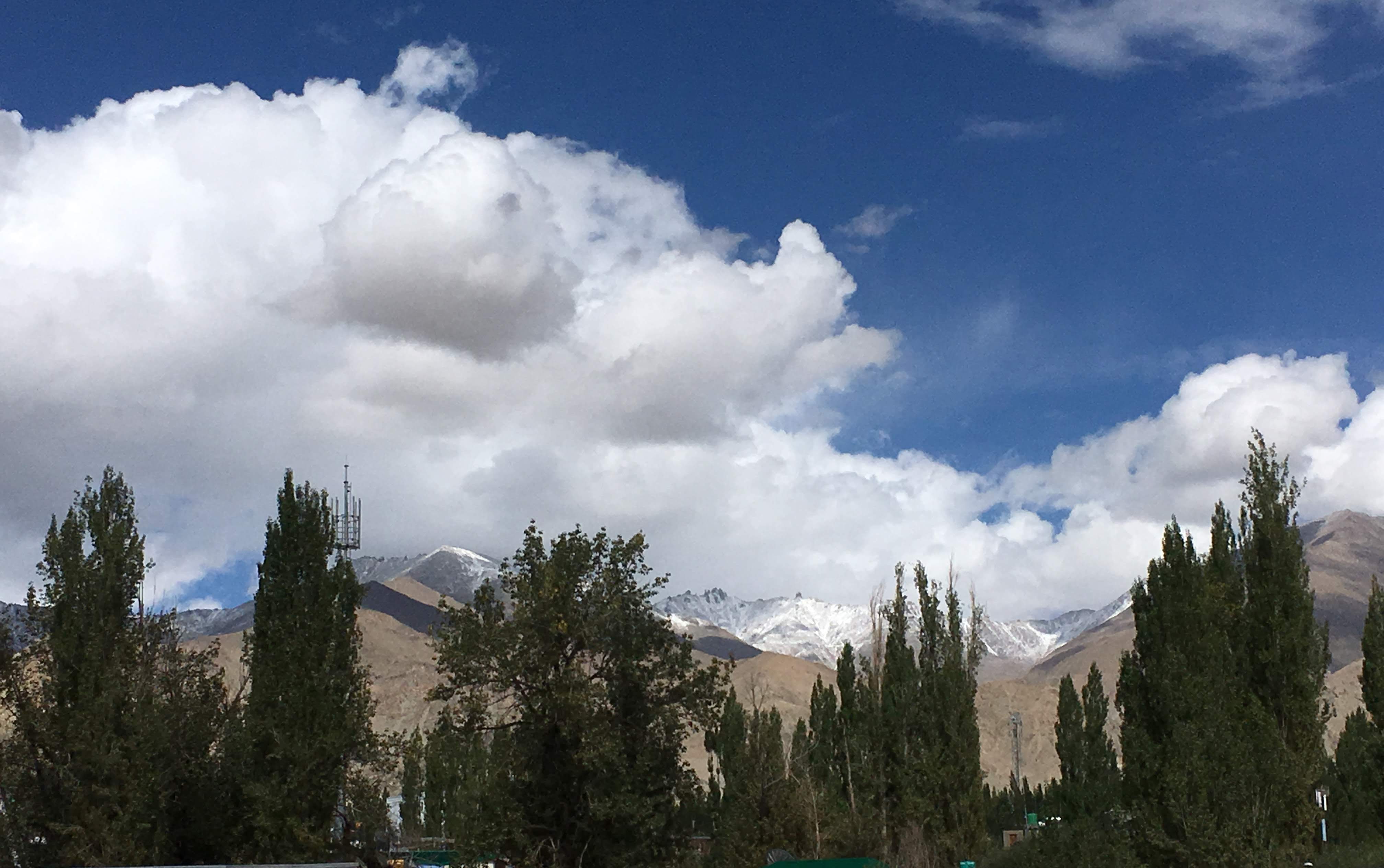 Looking towards the Khardung La from the terrace of my hotel
Looking towards the Khardung La from the terrace of my hotel
Walking through Leh’s main bazaar, I noticed that it had changed quite a lot since my last visit. The old shops had given way to new multi-cuisine and Kashmiri restaurants, fancy coffee shops and Delhi style momo stalls. The main road was closed for traffic as it has been converted into a pedestrian walkway. The only sight that reminded me of the old times was that of the hawkers selling dried fruits on the footpath. In this modern market aimed at tourists, there wasn’t a local eatery to be found.
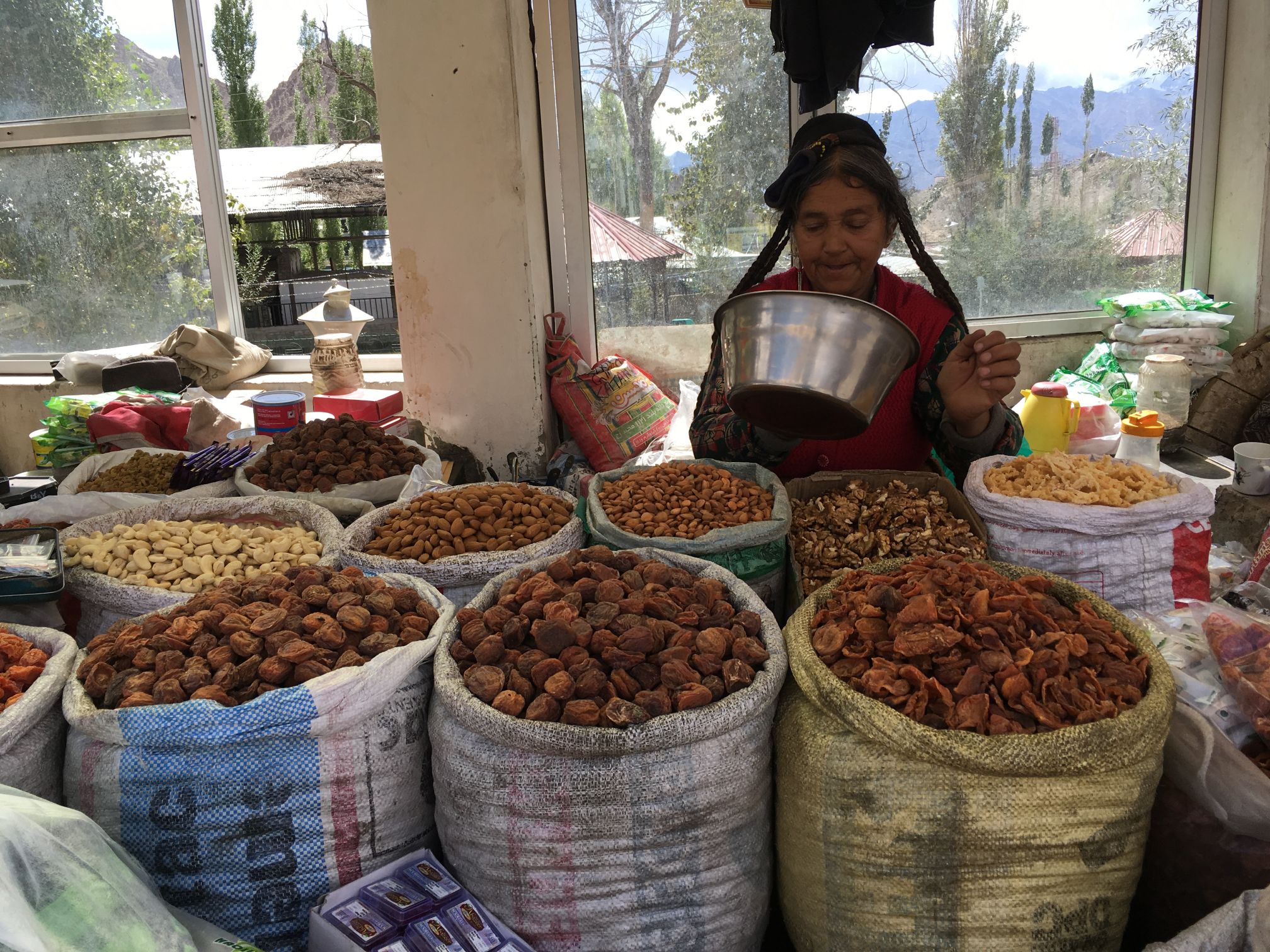 Dry fruit seller in Leh market
Dry fruit seller in Leh market
I kept walking downhill and reached Moti Market, an old market where the locals shop. The narrow lanes of Moti Market are lined with small shops most of which are run by warm, friendly women. They sell a variety of things from footwear to knockoff North Face apparel, cosmetics to utensils and what not. Looking for a place to eat, I was approaching the last few shops of this market when pictures of momos and thukpa came into sight. It was a small eatery named Ldumra. Later, I came to know that Ldumra is the Tibetian name for the beautiful Nubra valley and means “valley of flowers”. As I went up the stairs, I saw the words “Master chef” painted on the door. Inside a few locals were enjoying their afternoon meals and it seemed that the master chef could be trusted.
I ordered mutton thukpa with momos (called mok-mok locally) and eagerly waited for the food to come. When it finally arrived, the sight of it in the bowl was enough to get rid of my blues. I gorged on the momos and then went on to finish the spicy noodle soup. It was the best thukpa I had ever tasted and it erased the memory of all the bad ones from the previous years. I thanked the chef for the great food and promised to return for more.
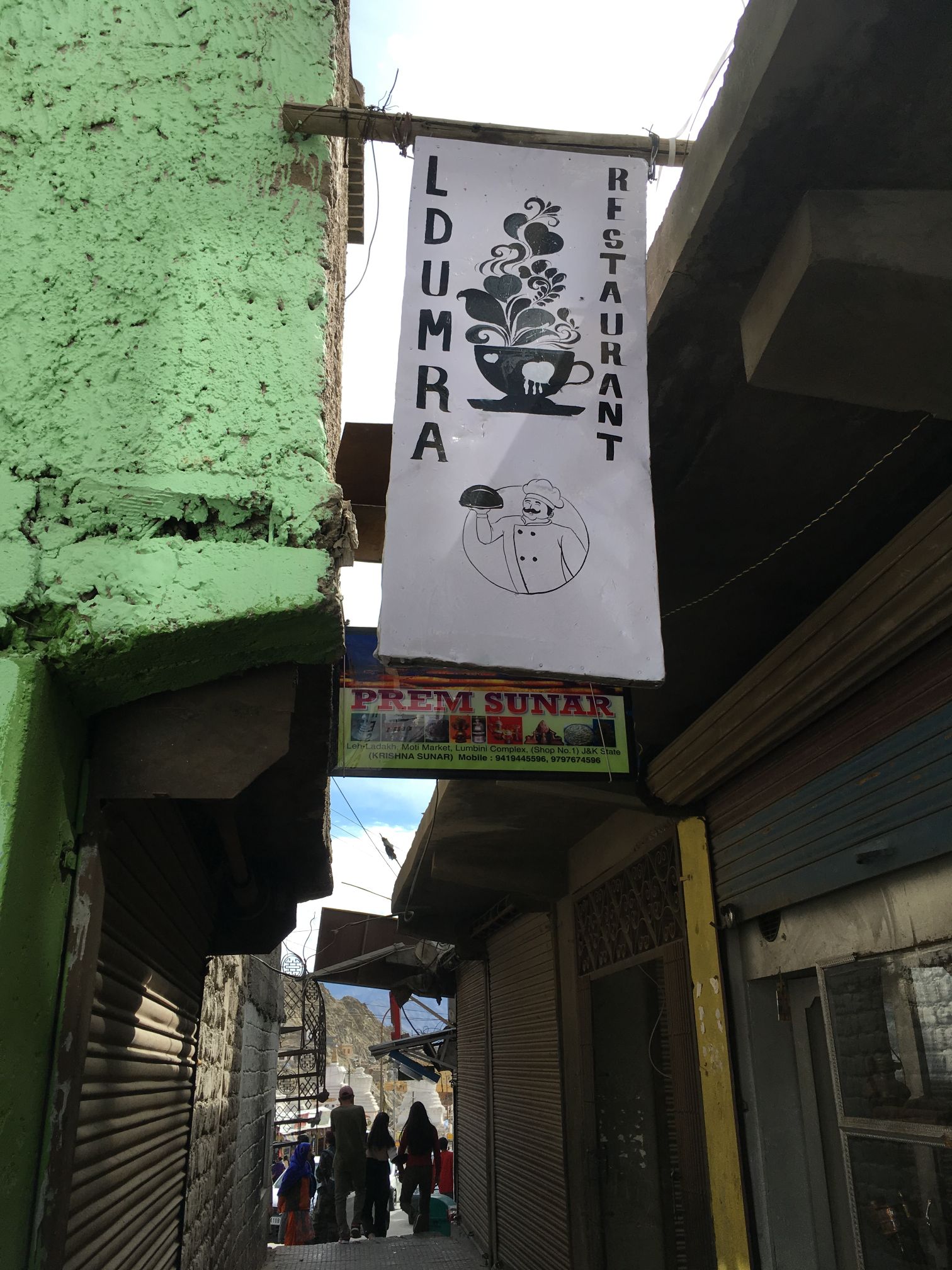 Ldumra restaurant - Best thukpa in town
Ldumra restaurant - Best thukpa in town
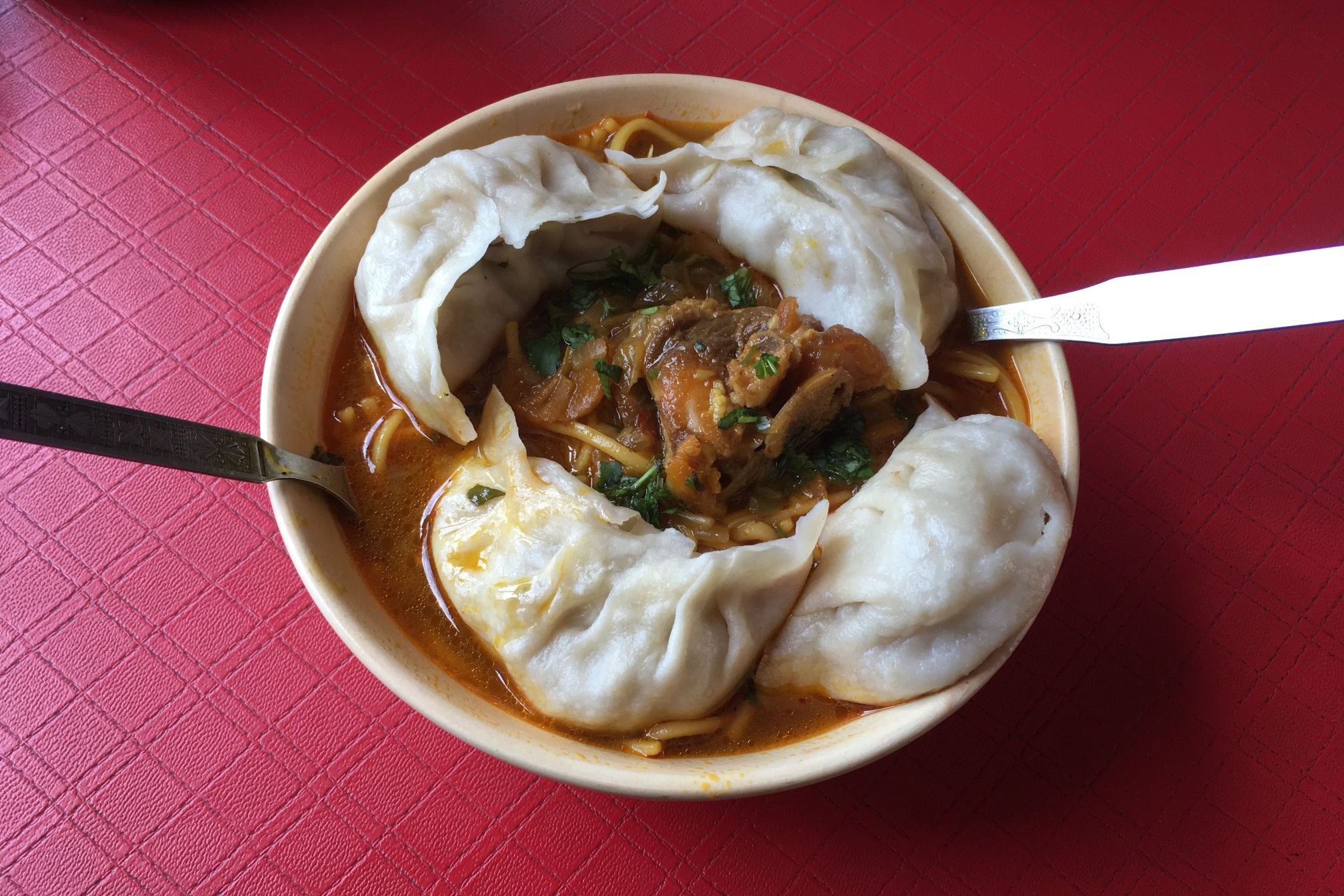 The sight that swept away all my anxiety
The sight that swept away all my anxiety
With my thukpa craving satisfied, I turned my attention to the other culinary delights in Leh. While searching for my hotel, I had noticed a nice, stylish restaurant with an interesting name - Namza. It has an eclectic menu that not only features Ladakhi cuisine but also Balti and central Asian dishes. To go with the awesome food, the place has great hospitality and I ended up having a few of my meals there. The Yarkhandi pulao, a dish that travelled to Leh over the ancient Silk route, and the buckwheat pancakes with apricot sauce are especially recommended.
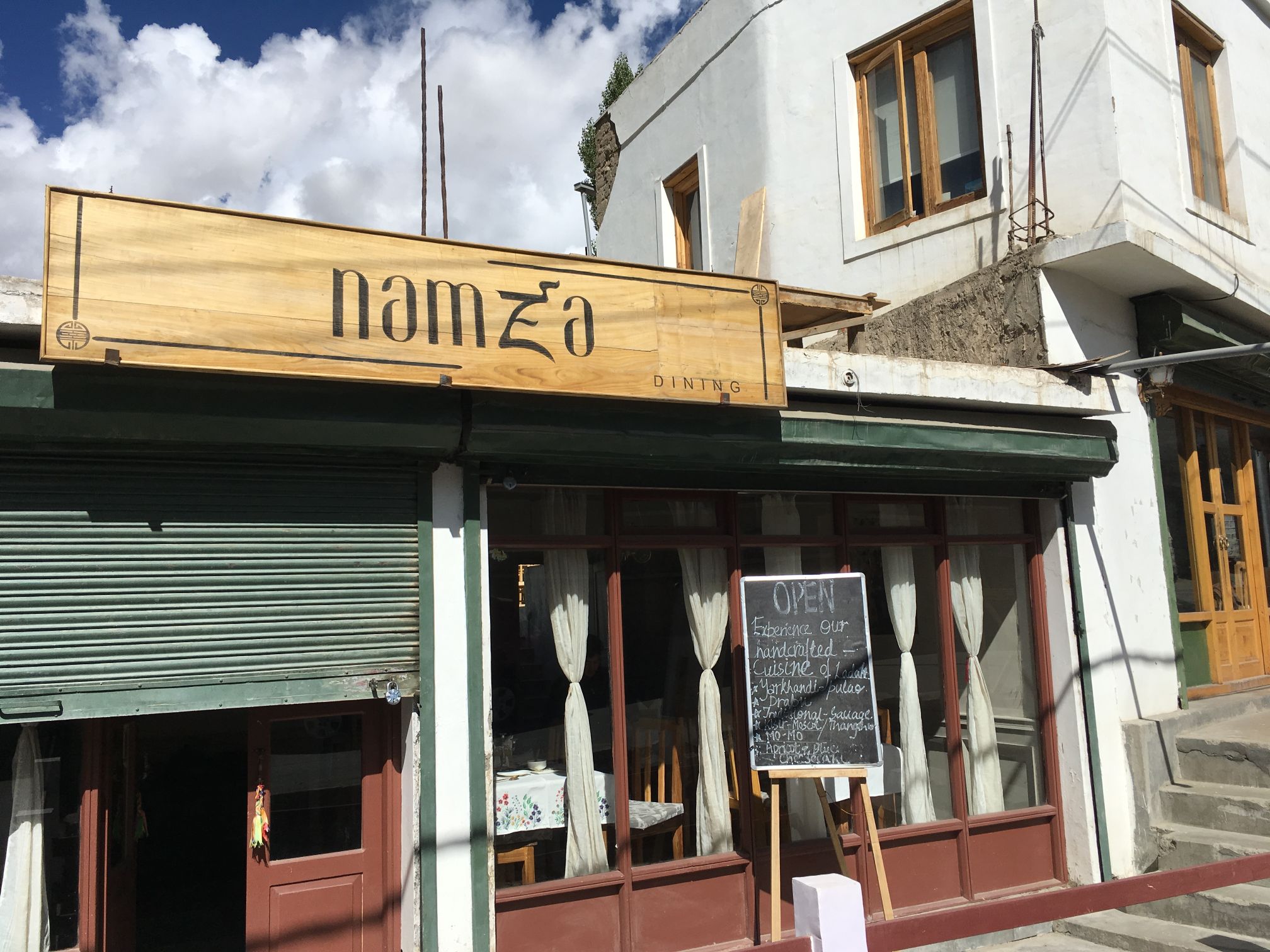 The awesome Namza restaurant
The awesome Namza restaurant
The next morning I decided to walk up to Shanti Stupa to get a good look at Leh and the surrounding villages. The streets were all deserted as I made my way along Changspa Road to the base of the hill. From there one can either take the stairs or ascend via the road. The stairs are shorter but a bit tough without proper acclimatization. Halfway up the stairs as I was catching up on my breath, the first rays of the sun lit up the snow covered Stok Range and gradually made their way towards the town. I meditated at the shrine in the calm morning before completing a parikrama of the main Stupa. After taking in the morning views one last time, I made my way back to the town.
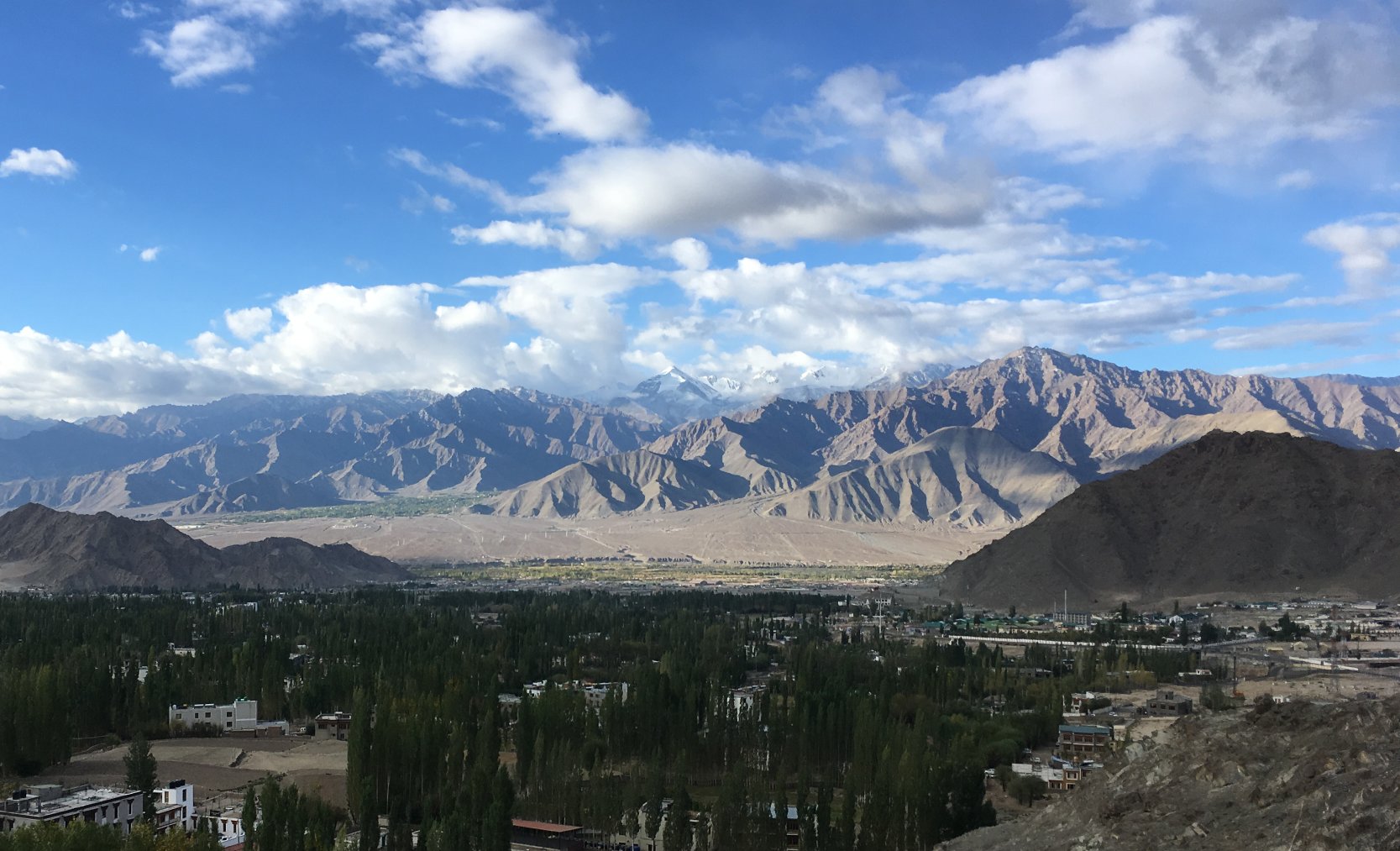 Sunrise over Leh with the Stok Range covered in clouds
Sunrise over Leh with the Stok Range covered in clouds
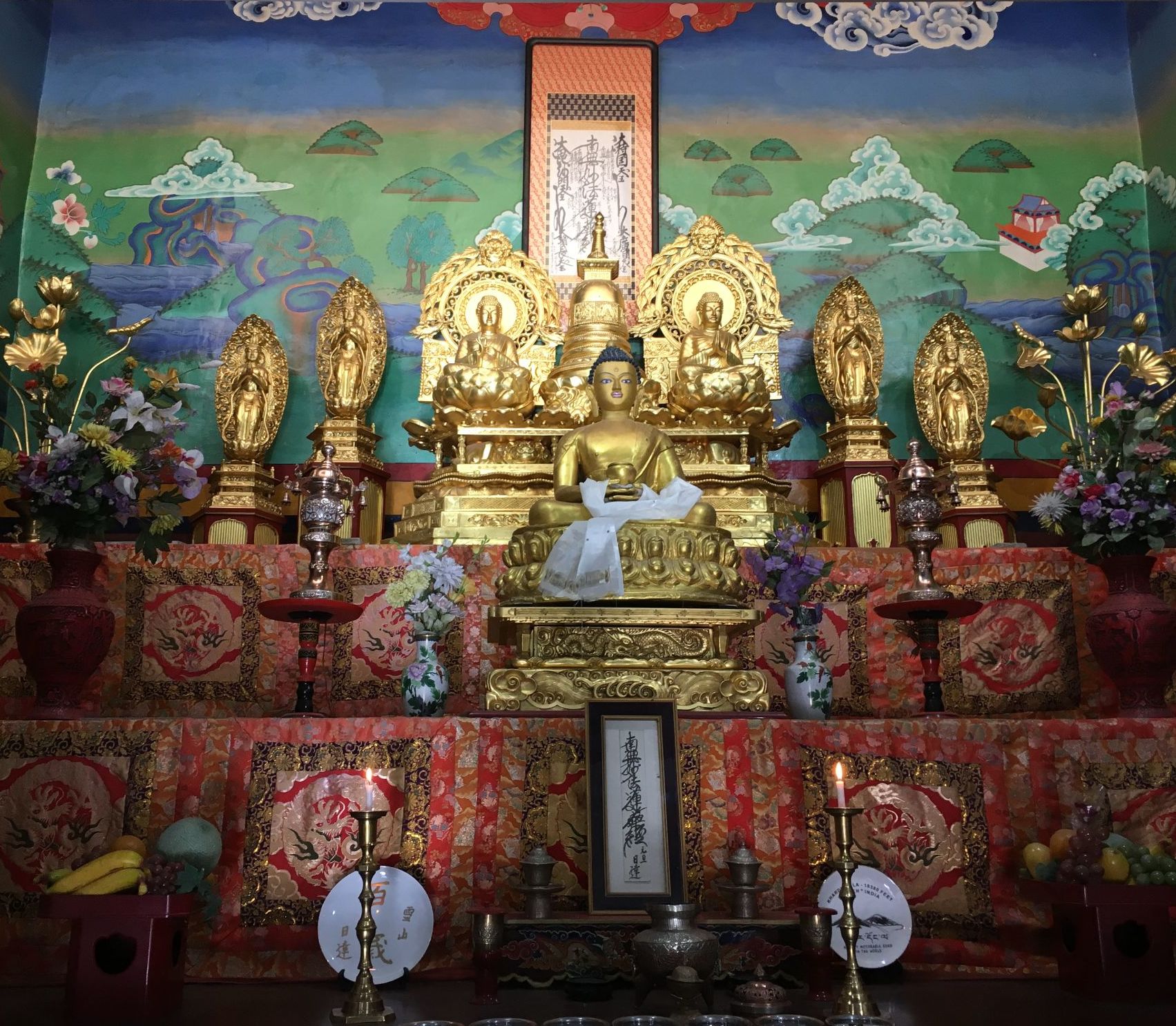 The main shrine at Shanti Stupa
The main shrine at Shanti Stupa
Back in Leh, it was time to look for another place to have breakfast. On my way to the market I found a small joint, De Khambir, which was run by some hard working local women. The place is named after a local bread made from fermented wheat flour that is traditionally served with salted butter tea. The restaurant has various khambir breakfast combos along with Ladakhi staples like skiu and chu tagi. I enjoyed the cheese filled khambir with fresh apricot juice and it was good to keep me going for the next few hours.
Winding up
On this trip, I also took some time out to visit the recently renovated Leh Palace. The palace was not in great shape earlier but over the past few years the Archaeological Survey of India has done a decent job to get it in much better shape. The exterior walls and woodwork have been completely overhauled and some of the rooms have been turned into photo galleries. The royal shrine in the palace is worth a visit for a few moments of silence and the terraces on the upper floors provide a bird’s eye view of the old town. Although not yet back at its medieval glory, it is still great to see the palace in its current state.
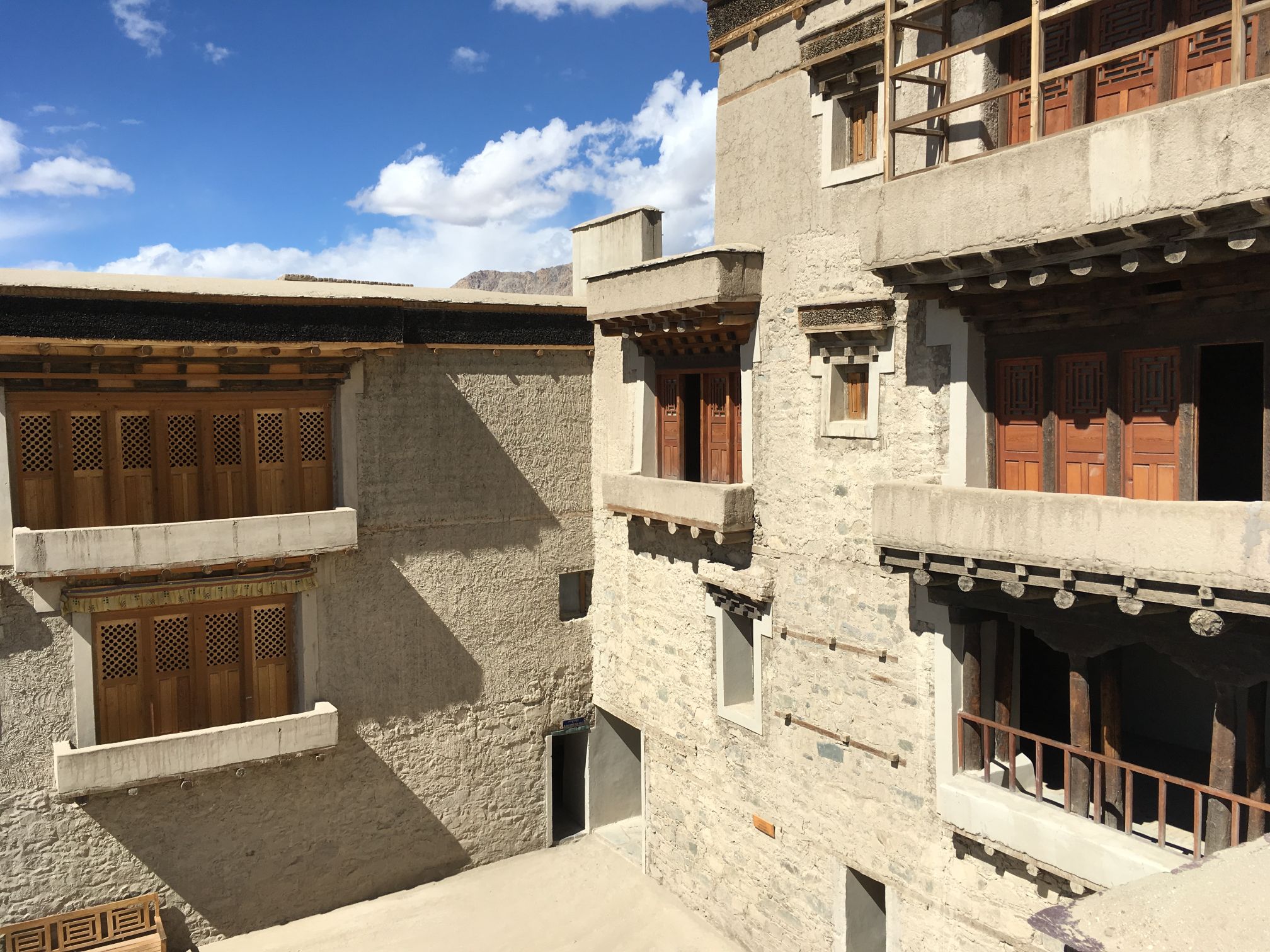 The Leh Palace
The Leh Palace
All in all, my short stay in Leh was mostly spent roaming around and trying the local food. I found some really interesting places to eat, and to top it all, I finally found the perfect thukpa.
Info
-
Ldumra restaurant, near the prayer wheel at the lower end of Moti Market - Great place to enjoy momos and thukpa
-
De Khambir, Zangsti Road - Awesome traditional breakfast place.
-
Namza, Zangsti Road, near Marathon Office - Upmarket restaurant with an eclectic menu
Trip dates: Sep/Oct 2019